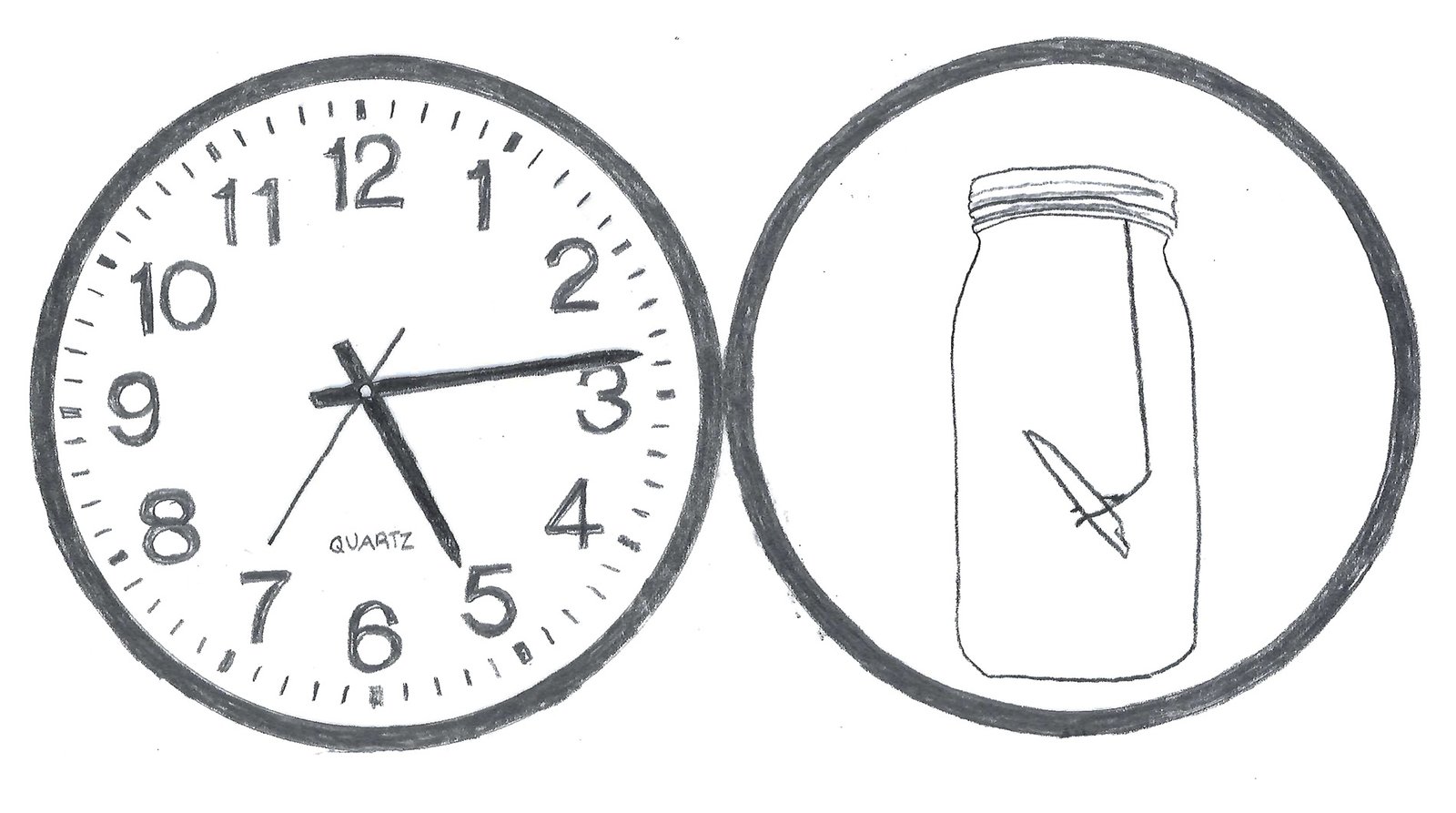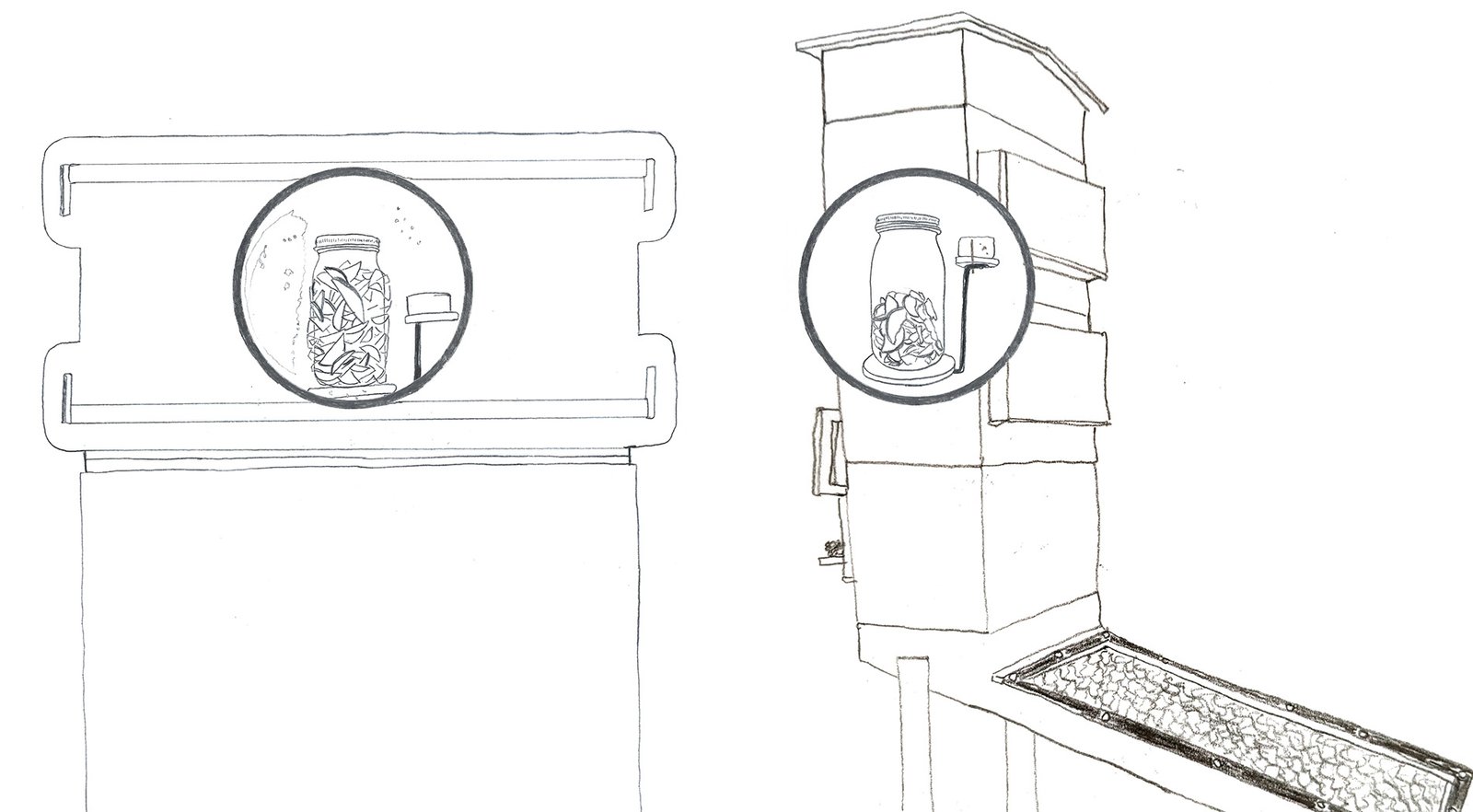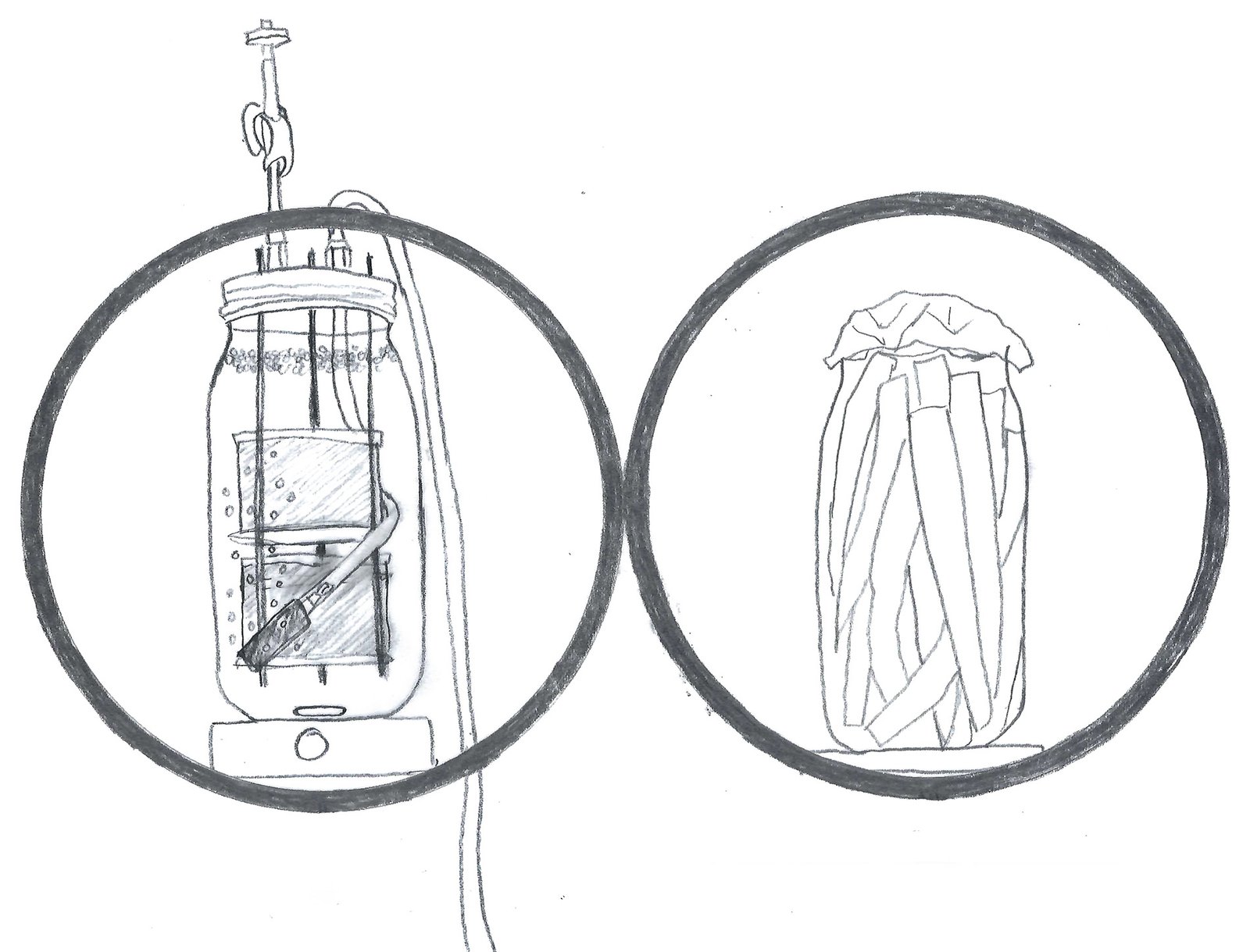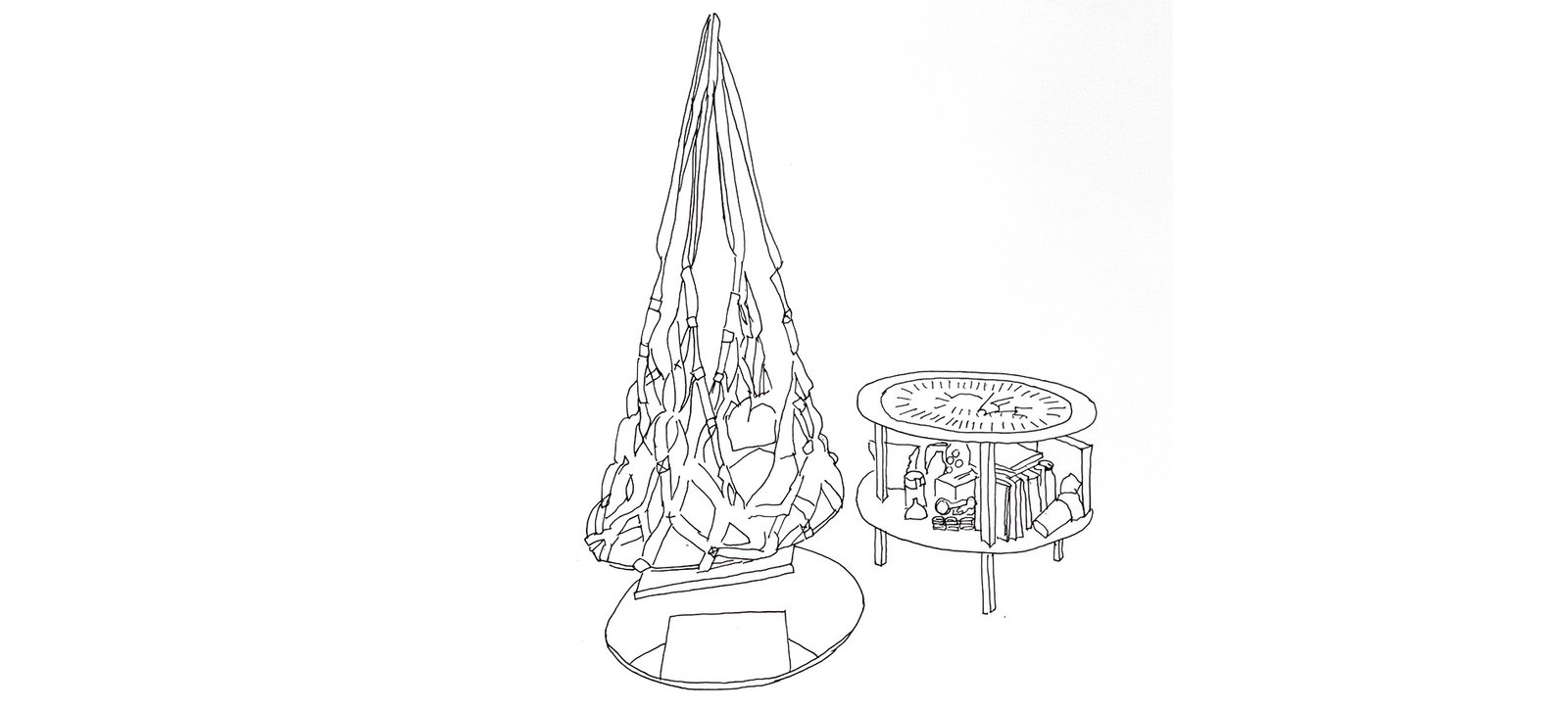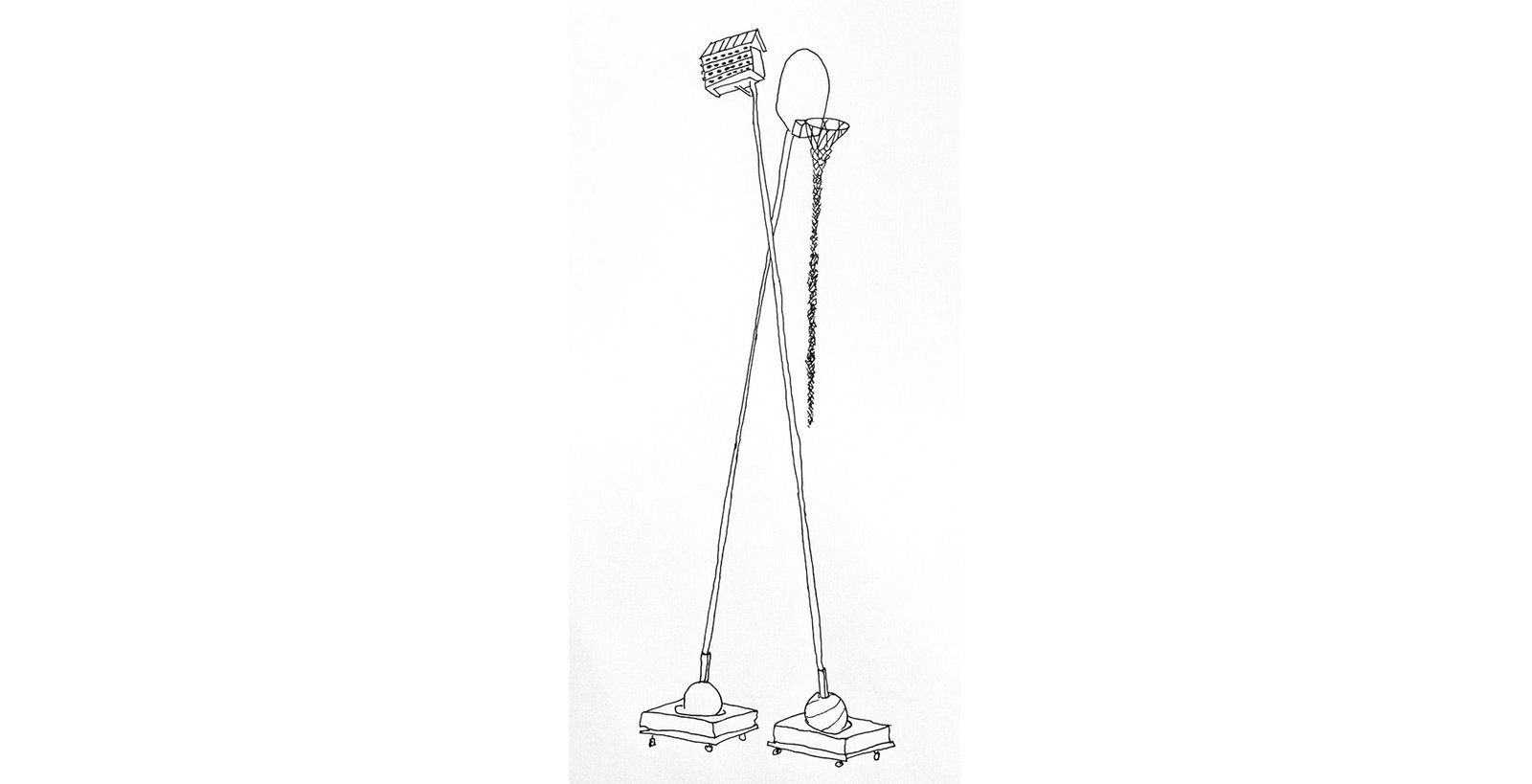Pickles & Concrete
Pickles & Concrete is an ongoing experimental time-negotiating kitchen laboratory that contrasts two human attempts to alter the flow of time. In the kitchen we freeze, dehydrate and pickle foods to remove them from their usual cycle of decay. In contrast, we freeze and thaw concrete to simulate the passage of entire seasons in a single day. Pickles & Concrete invites players to get tangled up in the time scales between food preservation, building materials, bacteria and geology
You can find Pickles & Concrete fermenting at Flux IV at 56-21 2nd Street in Long Island City until December 13. Below is a gallery guide with links to more info.
- Squid/Clock Clocks Belmnitella americana fossil.
- The Belmnitella americana was an ancient cephalopod, relative to the ancestors of todays squids. This fossil is from New Jersey. The carbon from a specific Belmnitella fossil found in the Pee Dee River in South Carolina was used to determine the 0 value for the delta scale used in relative isotope-ratio measurements of carbon. Measuring changing ratios of Carbon12 and Carbon13 isotopes can also help us understand the ratio of carbon in the atmosphere to that in the ocean. The Belmnitella biomineralized the calcium carbonate through a similar process to how S. pasteurii makes bioconcrete. Further reading: The Global Carbon Cycle by David Archer
- A frequency reference is at the core of every clock. A pendulum completes a swing once a second, a quartz crystal (silicone dioxide) cut into a tiny tuning fork, vibrates 32,768 times per second. The quartz crystal is piezoelectric and so not only vibrates but also produces an electrical charge, which drives the clock hands more accurately than a pendulum.
- Accelerator/Decelerator Clocks Accelerator/Decelerator: Freezer
- This freezer both slows biological time and accelerates geological time. The apple slices are cold enough to freeze most bacterial activity. The bioconcrete sample experiences an accelerated winter. In engineering this is called Freeze/Thaw testing and is a means of simulating the effects of cold winters and hot summers on concrete.
- The dehydrator accelerates geological time and slows biological time. The bioconcrete in the dehydrator experiences an accelerated summer. The apple slices are dehydrated and the reduced water content makes it difficult for bacteria to grow.
- Cementation/Bioreactor Clocks Cementation Reactor for growing bioconcrete with Sporasarcina Pasteurii.
- Sporasarcina Pasteurii (S. pasteurii) is a bacteria that can make calcium carbonate under the right conditions. This is a similar process to how seashells are made and which leads to the sedimentary formation of limestone.
- The S. pasteurii is grown in 44 mL of food grade yeast extract and Urea growth medium innoculated into 100 mL of silica sand wrapped in a geotextile form. The two forms in the cementation reactor are surrounded by a cementation media that includes Urea, Calcium Chloride, Ammonium Chloride, food grade Yeast Extract and Sodium Bicarbonate. You can find more detailed information in the lab notes.
- Lacto-fermentation uses the naturally occurring Lactobaccilus bacteria on and in fruits and vegetables and the creation of an anaerobic (without oxygen) environment, by placing the fruits under water to make sour pickles.
- Faceplant & Phylogenetic Tree Table FacePlant
- FACEPLANT is an experiment in inviting a shared human/soil holobiome. At once an optimistic and pessimistic gesture, FACEPLANT makes space for the biome that populates and constitutes the 'boundary' of a human body and the biome that populates a specific hole in the ground near Ellicott Creek, Buffalo, NY.
- FacePlant hangs from a dreamNet, so it can be watched in the floor.
- Phylogenetic Tree Table examines the potential evolutionary relationships between bacteria used to make pickles & the bacteria used to make bioconcrete. S. pasteurii is the bacteria in the cementation bioreactor, Lactobacillus plantarum is one of the most common pickling bacterias. Phylogenetic Tree Table also contains pickling & biocement supplies:
- Food Grade Yeast Extract, Calcium Chloride, Ammonium Chloride, and Sodium Bicarbonate, missing: Lab Grade Urea & Sporosarcina pasteurii; Silica Sand (pool filter); Biochar; Brix Blend Rock Dust; Grate for 1st version of cementation reactor; Timer; Induction burner; Pot; Bacillus thuringiensis (for fungus gnat remediation) Scale; Jars; Fermenting lids; Sugar; Salt; Cheesecloth; Box grater; Cutting board; Knife; Spring water; Measuring cups & spoons; Funnels; Lab Notes & Research Papers, Fermentation Library; Coriander; Turmeric; Cumin; Spice grinder; Sandwich bags; Fermentation weights
- Sounding Swift Tower
- Time scaled soundscape in fragment of a chimney swift tower. The chimney swift, as its name suggests, primarily occupies human architecture. Previously dwellers of tree cavities, deforestation and the prevalence of starlings have reduced their non-human roosting and nesting options.
- This style of chimney swift tower is built in 3 4’ sections that can be stacked to create a 12’ tower usually on a few feet of steel legs. Here a 4’ section becomes an invitation to consider a time scaled soundscape that extends and compresses a series of sounds to imagine a bacterial soundscape, both of biocementation and fermentation.
- Dirtball Fruiting Body 2 & 3
- The Dirtball Fruiting Bodies are part of Dirtball, Dirtball is a re-imagined basketball court where humans, plants, animals, minerals and microorganisms can play together to nurture soil and potentially increase its carbon sequestration. Dirtball courts are slowly destroyed by playing basketball on them and by the effect of chemical and physical weathering.
- When outdoors, Dirtball fruiting bodies can rock and shift in the wind and slowly grind themselves and their bedrock, or in this case, mortars into dust.
- Dirtball Fruiting Body 3 hosts a 1:12 version of the purple martin hotel we built at the Franconia Sculpture Park Dirtball Court.
- Flower Flags & Rock Bags Flower Flags
- The Flower Flags are portraits of prairie plants at Franconia Sculpture Park in Shafer, MN: Red Clover, Sweet Clover; Thistle, Rough Fleabane; Tall cornflower, Big Bluestem; Common Milkweed, Timothy; Aster, Prickly Lettuce
- The Rock Bags are portraits of pavers at Dirtball courts at Franconia Sculpture Park after 3 years weathering, on Governors Island in their first fall & winter and at Winterfield Community Garden in Charlotte, NC after 1 year.
